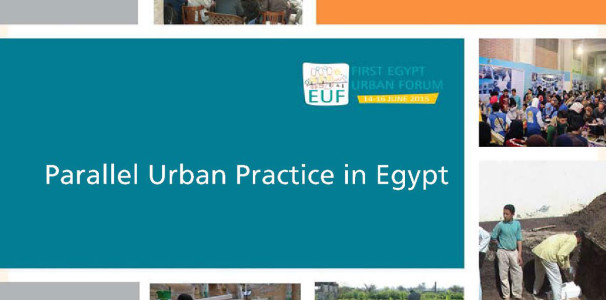While government agencies are known to be the main actors in the built environment, providing social housing, infrastructure and services, while also being the sole actors responsible for planning and policy, there are a number of non-governmental actors that have had an impact on the lives of many, especially after the January 2011 Revolution that produced a resurgence in community-based initiatives.
And while these contributions represent a drop in the ocean compared to the scale of government-sanctioned work, they have usually taken place where government agencies have not been able to intervene or, represent alternative ideas and practices which partnered with government agencies, but that mainstream practice can learn from. However, most of these non-governmental interventions are undocumented, while a lot more have been out of the lime-light and remain unknown.
In that light, Parallel Urban Practice in Egypt has mapped 15 practices for the occasion of the First Egypt Urban Forum (EUF). This forum builds on the partnership between the Ministry of Housing, Utilities and Urban Communities, the Ministry of Urban Renewal and Informal Settlements and UN-Habitat to strengthen the existing institutional landscape at the national level and pave the way to a greater integration of Egypt on the global urban development scene.
These parallel urban practice initiatives and projects have been chosen to represent the five themes of the EUF; Urban Planning and Upgrading, Urban Governance and Legislation, Housing, Urban Service Delivery and Urban Economy. The actors behind these practices cover the spectrum of non-governmental actors, from development NGOs, to informal campaigns as well as practitioners working individually or as part of think tanks. Practices were also chosen to represent five main regions in Egypt’s; Alexandria, the Delta, Greater Cairo, the Suez Canal & Sinai, and Upper Egypt & the Red Sea.
To download the report please click here.


